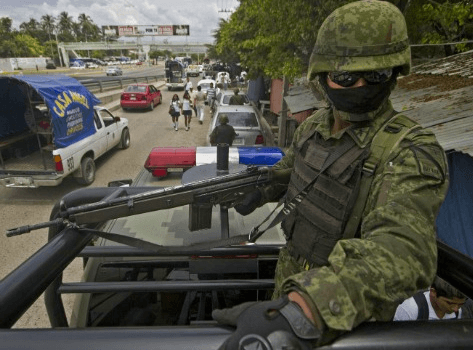Mexican drug cartels are no strangers to heroin smuggling, although they have historically lagged behind other countries and organizations in production and distribution. However, a recent investigation by the award-winning Dromomanos journalism collective revealed the powerful Sinaloa Federation has overtaken Colombian and Asian drug suppliers in New York, and that the cartel now dominates heroin distribution across the United States.
According to analysis by InsightCrime.org, the DEA has indicated that 50 percent of heroin sold in the US is produced in Mexico, between 43 and 45 percent comes from Colombia, and the rest from Asian countries. Almost all of it is supplied by Mexican cartels. This is no surprise, considering the years of practice Mexican drug smugglers have under their belts.
The original opiate smugglers in Mexico were actually the Chinese, who brought the opium poppy across the Pacific in the 1860s while working on Mexican railroads. After the turn of the century, they started smuggling opium and heroin into southern California through Tijuana. Mexican criminal groups saw the profitability of the trade and started to take it over within a few decades. The US demand for morphine exploded during World War II, and there is evidence to support the notion that cross-border smuggling of the drug was sanctioned because of shortages for injured soldiers returning from overseas.
Despite the steady demand for heroin and opium derivatives in the US in the past several decades, most of the heroin in the US was still coming from Afghanistan in the white powder variety. Mexican brown powder heroin was seen as substandard, although there was still a steady pipeline—most notably the Herrera family’s “heroin highway” that ran from Durango to Chicago in the 1970s and early 1980s—running from Mexico into the US. But with Mexico’s rise as a dominant producer of the drug has come a new and more deadly trend: black tar heroin, more powerful and less expensive than its inferior brown powder cousin.
Part of the danger of this relatively new drug formulation is that it doesn’t need to be injected, removing much of the stigma associated with traditional heroin use. Black tar heroin just needs to be heated up on a piece of tin foil in order to produce smoke that can be easily inhaled. Street prices for the drug are also now often cheaper than weaker prescription Oxycontin tabs, favored by drug-using teenagers in Middle America. A drug that costs less than prescription opiates, produces a bigger high, and leaves no evidence (e.g. track marks) of use is a huge temptation for a middle-class suburban demographic with a willingness to experiment beyond marijuana, Ecstasy, and pills.
And law enforcement agencies across the country are seeing evidence of this growing trend. Bridget Brennan, New York’s special narcotics prosecutor, told Mexico’s El Universal that the Sinaloa Federation is controlling heroin routes into the US, which are traditionally the same as cocaine and marijuana routes. “The heroin we seize is no longer just destined for distribution in New York, but also in other states like Pennsylvania, Massachusetts, and Vermont. New York has become a hub [a storage and distribution center],” said Brennan. In Vermont, Governor Peter Shumlin declared a health emergency last January due to a 770 percent increase in the consumption of opiates since 2000.
Determining exactly how the heroin goes from Mexico into the hands of couriers and onto the streets of New York and other parts of the country is still a huge challenge for US law enforcement. Brennan explained, “There is probably just one link in the chain, and there may even be a direct connection between those who bring large quantities of heroin to New York and those that distribute it in envelopes in the streets. There are countless organizations, but the Dominicans continue to lead the distribution in the city.” She added that for the cartels, it’s better to work with the local, already established mafias.
This won’t be the last trend that the Sinaloa Federation and other major Mexican cartels will control. The US drug market can be both reliable and whimsical, and the key to a cartel’s success is its ability to spot upcoming trends, changes in demand, and market opportunities before its competitors. Despite the loss of key personnel in the last year, including former leader Joaquin “El Chapo” Guzmán,” the Sinaloa Federation continues to demonstrate a resilience that both Mexican and US authorities are finding extremely difficult to break.
Sylvia Longmire is a border security expert and Contributing Editor for Breitbart Texas. You can read more about the activities of Mexican drug cartels in her new book, Border Insecurity: Why Big Money, Fences, and Drones Aren’t Making Us Safer.

COMMENTS
Please let us know if you're having issues with commenting.